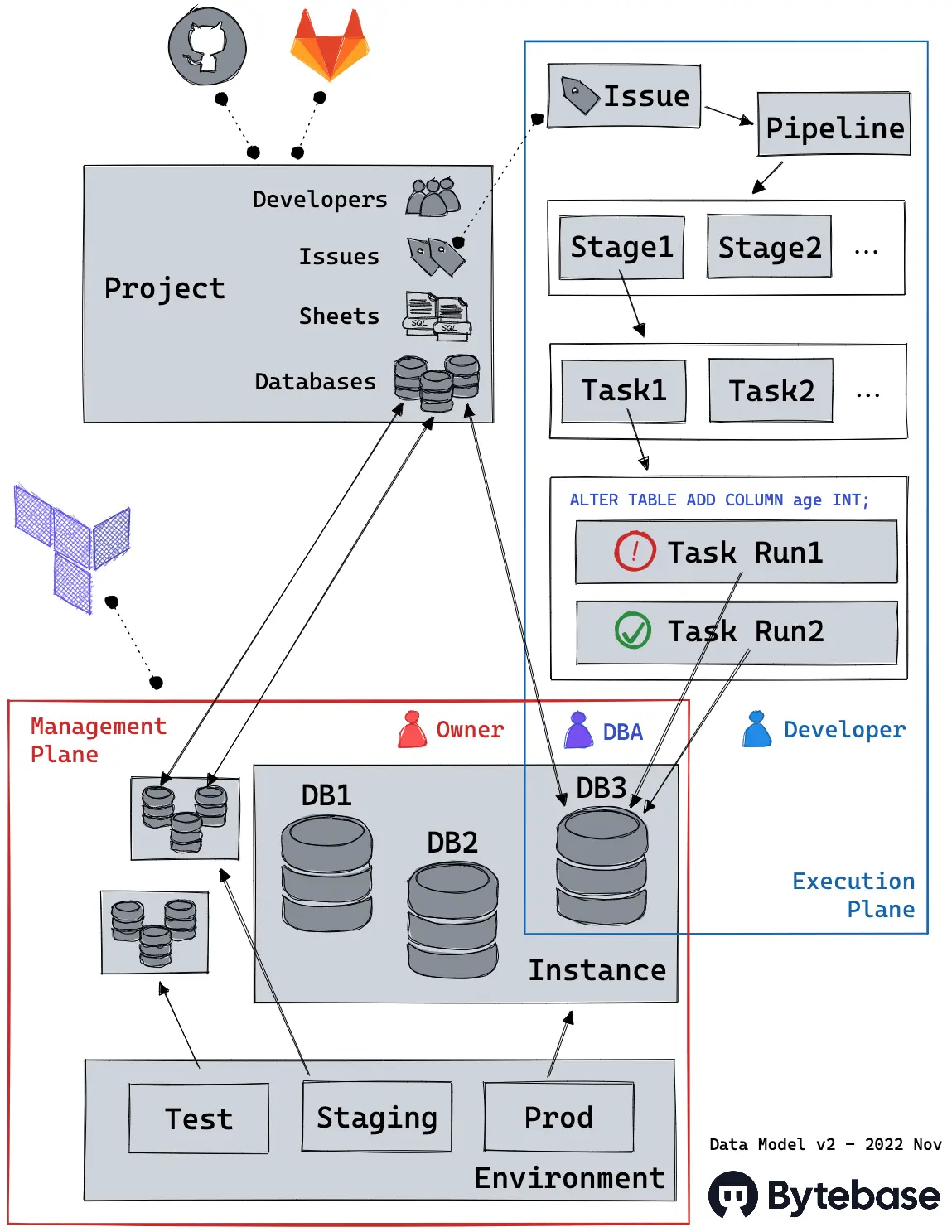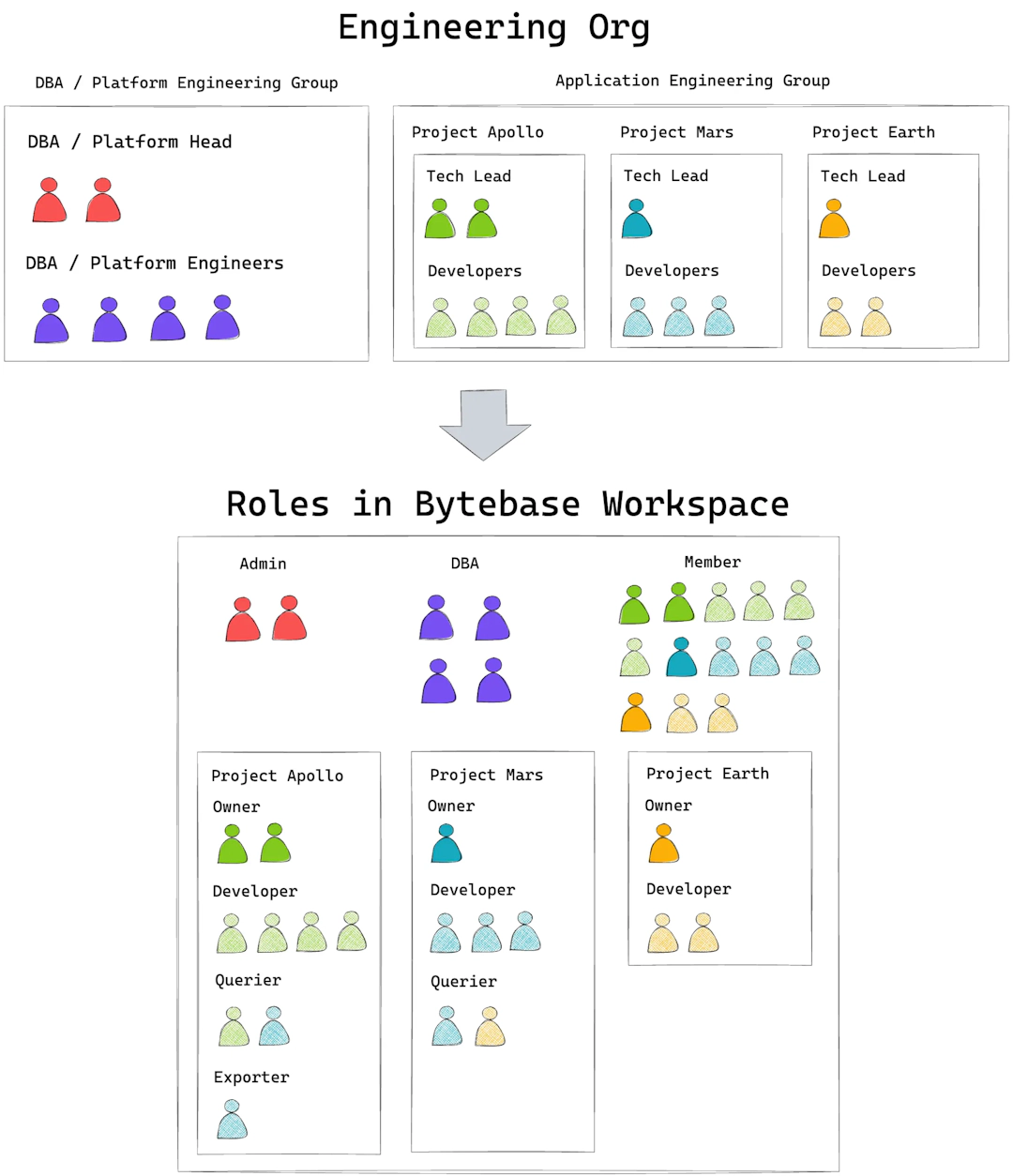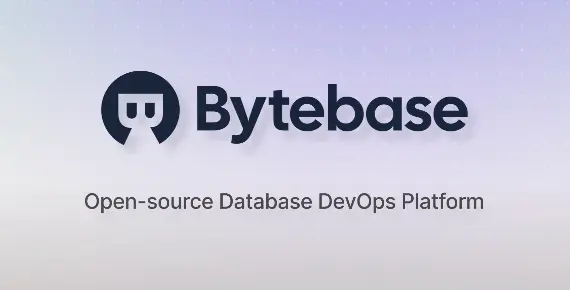🖖 Intro
Bytebase is a Database CI/CD solution for the Developers and DBAs. It's the only database CI/CD project included by the CNCF Landscape and Platform Engineering. The Bytebase family consists of these tools:
- Bytebase Console: A web-based GUI for developers and DBAs to manage the database development lifecycle.
- Bytebase API: Provide both gRPC and RESTful API to manipulate every aspect of Bytebase.
- Bytebase CLI (bb): The CLI to help developers integrate database changes into the existing CI/CD workflow.
- Bytebase GitHub App and SQL Review GitHub Action: The GitHub App and GitHub Action to detect SQL anti-patterns and enforce a consistent SQL style guide during Pull Request.
- Terraform Bytebase Provider: The Terraform
provider enables team to manage Bytebase resources via Terraform. A typical setup involves teams using
Terraform to provision database instances from Cloud vendors, followed by using Bytebase provider to
prepare those instances ready for application use.
🔧 Installation
🎮 Demo
Live demo at https://demo.bytebase.com
You can also book a 30min product walkthrough with one of
our product experts.
👩🏫 Tutorials
Product tutorials are available at https://www.bytebase.com/tutorial.
Integrations
- Manage Supabase PostgreSQL
- Manage render PostgreSQL
- Manage Neon database
- Deploy to sealos
- Deploy to Rainbond
💎 Design Principles
🧩 Data Model
More details in Data Model Doc.

🎭 Roles
More details in Roles and Permissions Doc.
Bytebase employs RBAC (role based access control) and provides two role sets at the workspace and project level:
- Workspace roles:
Admin,DBA,Member. The workspace role maps to the role in an organization. - Project roles:
Owner,Developer,Releaser,Querier,Exporter,Viewer. The project level role maps to the role in a specific team or project.
Every user is assigned a workspace role, and if a particular user is involved in a particular project, then she will also be assigned a project role accordingly.
Below diagram describes a typical mapping between an engineering org and the corresponding roles in the Bytebase workspace

🕊 Developing and Contributing

-
Bytebase is built with a curated tech stack. It is optimized for developer experience and is very easy to start
working on the code:- It has no external dependency.
- It requires zero config.
- 1 command to start backend and 1 command to start frontend, both with live reload support.
-
Interactive code walkthrough
-
Follow Life of a Feature.
Dev Environment Setup
Prerequisites
- Go (1.23.2 or later)
- pnpm
- Air (our forked repo @87187cc with the proper signal handling). This is for backend live reload.
Steps
- Pull source.
- Create an external Postgres database on localhost.
-
Start backend using air (with live reload).
Change the open file limit if you encounter "error: too many open files".
If you need additional runtime parameters such as --backup-bucket, please add them like this:
-
Start frontend (with live reload).
Bytebase should now be running at http://localhost:3000 and change either frontend or backend code would trigger live reload.
Tips
- Use Code Inspector to locate
frontend code from UI. HoldOption + Shifton Mac orAlt + Shifton Windows
🤺 Bytebase vs Alternatives
Bytebase vs Flyway, Liquibase
Either Flyway or Liquibase is a library and CLI focusing on schema change. While Bytebase is an one-stop
solution covering the entire database development lifecycle for Developers and DBAs to collaborate.
Another key difference is Bytebase doesn't support Oracle and SQL Server. This is a conscious
decision we make so that we can focus on supporting other databases without good tooling support.
In particular, many of our users tell us Bytebase is by far the best (and sometimes the only) database
tool that can support their PostgreSQL and ClickHouse use cases.
Bytebase vs Yearning, Archery
Either Yearning or Archery provides a DBA operation portal. While Bytebase provides a collaboration
workspace for DBAs and Developers, and brings DevOps practice to the Database Change Management (DCM).
Bytebase has the similar Project concept seen in GitLab/GitHub and provides native GitOps integration
with GitLab/GitHub.
Another key difference is Yearning, Archery are open source projects maintained by the individuals part-time. While Bytebase is open-sourced, it adopts an open-core model and is a commercialized product, supported
by a fully staffed team releasing new version every 2 weeks.
Bytebase vs Metabase
Metabase is a data visualization and business intelligence (BI) tool. It's built for data teams and business analysts to make sense of the data.
Bytebase is a database development platform. It's built for the developer teams to perform database operations during the application development lifecycle.
Bytebase vs CloudBeaver
Both have web-based SQL clients. Additionally, Bytebase offers review workflow, more collaboration and security features.
Bytebase vs DBeaver / Navicat
SQL GUI Client such as MySQL Workbench, pgAdmin, DBeaver, Navicat provide a GUI to interact with the database. Bytebase not only provides a GUI client, it can also enforce centralized data access control for data security and governance.
Bytebase vs Jira
Jira is a general-purpose issue ticketing system. Bytebase is a database domain-specific change management system. Bytebase provides an integrated experience to plan, review, and deploy database changes.
👨👩👧👦 Community
🤔 Frequently Asked Questions (FAQs)
Check out our FAQ.
🙋 Contact Us
- Interested in joining us? Check out our jobs page for openings.
- Want to solve your schema change and database management headache? Book a 30min demo with one of our product experts.
No reviews found!

























No comments found for this product. Be the first to comment!